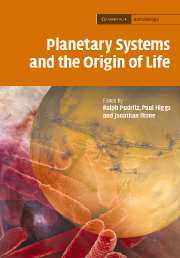|
|
Paul
Higgs
Professor Department of Physics and Astronomy Office: ABB 345 Phone: (905)
525-9140 x26870 |
Brief CV
From 2002 : Professor in Biophysics at McMaster (Joint
appointment between Physics
and Biochemistry
departments).
1995-2002 : Lecturer/Senior Lecturer in Bioinformatics at the School of
Biological Sciences, University of Manchester, UK.
1992-1995 : Royal Society Sorby Research Fellow at the
Dept of Physics, University of Sheffield, UK.
1990-1992 : Post-doc at the Service de Physique
Théorique, CEA, Saclay, France.
1989-1990: Post-doc at the Institut Charles Sadron, CNRS,
Strasbourg, France.
1986-1989 : PhD at the Cavendish Laboratory, Cambridge,
UK.
Full Publications
List from Google
Scholar
Research Interests
Ongoing Projects - Please
follow the links for details of our current work. I am also looking for additional
graduate students (starting Sept 2014) to work in these areas.
·
Evolution of Bacterial Genomes and
Horizontal Gene Transfer
·
The RNA World and the Origin of Life
·
Codon Usage, Translational Efficiency and the
Dynamics of Ribosomes
Older
Projects
·
Evolution of the Genetic Code
·
Evolution of Mitochondrial Genomes (For direct access to the OGRe
database of Mitochondrial Genomes click here: http://ogre.mcmaster.ca/)
·
Molecular Evolution and Phylogenetic Methods
·
Population Genetics and Mathematical Biology
For
earlier work on Food Webs, and on Polymers and Soft Condensed Matter,
see the Publications list above.
Origins Institute
I am on the steering
committee of the Origins Institute, which is an interdisciplinary science
institute engaged in research in fundamental areas of science linking
astronomy, physics, geology, biology and biochemistry. Full details of our
activities and our program of speakers and public lecturers can be found here.
Astrobiology Graduate
Program
The Origins Institute began
a new Collaborative
Graduate Program in Astrobiology - the first of its kind in Canada. We
welcome inquiries from prospective graduate students.
Biophysics and Quantitative Biology in Canada
Check out the links page to
other
Canadian Biophysics groups kindly provided by Andrew Rutenberg at
Dalhousie.
Teaching
Together with Cecile
Fradin, I am responsible for the Biophysics Specialization in the undergraduate
physics program. Students on this specialization take Core Courses in Physics
plus a range of courses from Biochemistry, Biology and Genetics. More
details of the Biophysics Specialization here.
Courses I Teach or have
taught recently:
ORIGINS 1I03 - Introduction to Origins Research - Web Page
PHYSICS 4S03 - Molecular
Biophysics - Web Page
BIOCHEMISTRY 4Y03 -
Genomes and Evolution - Web Page
PHYSICS 756 - Special
Topics in Biophysics - Web Page
Textbook
Bioinformatics and Molecular Evolution
Paul G. Higgs and Teresa
K. Attwood. (2005) Blackwell, Malden MA

This text, aimed at upper
level undergraduates and graduate students, introduces readers to the twin
themes of Bioinformatics and Molecular Evolution.
Bioinformatics chapters
explain the need for computational methods in the current era of complete
genome sequences and high-throughput experiments, introduce the principal
biological databases, and discuss methods used to create them and search them.
Algorithms for sequence alignment, identification of conserved motifs in
protein families, and pattern recognition methods using Hidden Markov Models
and neural networks are discussed in detail. A full chapter on data analysis for
Microarrays and Proteomics is included.
Evolutionary chapters begin
with a brief introduction to population genetics and the study of sequence
variation within and between populations, and move on to the description of
evolution of DNA and protein sequences. Phylogenetic methods are covered in
detail, and examples are given of application of these methods to biological
questions. Factors influencing the evolution at the level of whole genomes are
also discussed, and methods for the comparison of gene content and gene order
between species are presented.
This book explains the
theories behind the methods of bioinformatics rather than the technical details
of how to use any particular software package. Important mathematical
derivations and statistical tests are explained at a level that should be
accessible to biological students with perseverance. Muliple-choice
‘self-tests’ are provided, with answers available on an accompanying web site.
A section of longer problems is also included. This text will help the next
generation of biologists and biochemists gain the confidence with quantitative
methods and the specific vocabulary they need to interact with the
statisticians, database analysts and software engineers they will encounter in
their future careers.
Independent reviews of the
book have been published:
Jianzhi Zhang (2005)
Evolution 59: 2281-2283
Damien Counsell (2005)
Comparative and Functional Genomics 6: 317-319
You can buy it from the Blackwell
web site
Edited Book of Review Articles
Planetary Systems and the Origins of Life
Ralph Pudritz, Paul
Higgs and Jonathon Stone (2007) Cambridge Series in Astrobiology, vol. 3.
Cambridge University Press.

Several major breakthroughs
in the last decade have helped contribute to the emerging field of
Astrobiology. These have ranged from the study of micro-organisms that have
adapted to living in extreme environments on Earth, to the discovery of over
200 planets orbiting around other stars, and the ambitious programs for the
robotic exploration of Mars and other bodies in our solar system. This book
explores some of the most exciting and important problems in this field.
Beginning with how planetary systems are discovered, the text examines how
these systems formed, and how water and biomolecules necessary for life were
produced. It then focuses on how life may have originated and evolved on Earth.
The final section takes the reader on an exploration for life elsewhere in the
solar system, including Mars, Titan and Europa.
For further information and
to order the book, click here
This book arises from the
conference on Astrobiology and the Origins of Life that was organized by the
Origins Institute at McMaster. The conference program is availavle here
